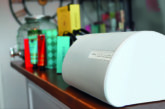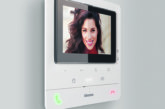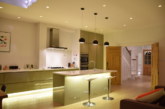Steve Detmer, Residential Product Manager at Lutron, explains the fundamentals of Smart Home Technology.
This year we have all been faced with our workplaces and homes blurring into one. As work/life schedules continue to evolve, so to have the expectations of our homes. Those working from home will need increased functionality and comfort, as well as an environment fit for focus and relaxation. This evolution of the home has boosted demand for smart home technology, from new headphones and laptops for virtual meetings, to smart speakers and lighting systems for the perfect after-work wind-down.
With the increased demand for smart home technology, there is an ever-growing list of products with varied settings, functions and standards. Whilst this technology is designed to make our lives easier, choosing the right solution has become increasingly difficult, even for those in the industry. Independently choosing between two solutions, that look almost identical, can be a painstaking task. Anyone who has invested in a technology that was subsequently made redundant (built-in CD or DVD players, iPod docks, etc.) understands the frustration this can cause.
Looking at products individually is often the first mistake. Instead, when creating a smart home, it’s more important to focus on the non-negotiable elements you are aiming to achieve.
Creating a list of rules to stick to, and fundamentals to look out for, will help identify the smart choice that will not hamper the homeowners in years to come. From how to prioritise the technology to buy, to the role of automation and wireless technology, there are some key aspects that cannot be ignored.
Wireless
It’s no secret that wireless is becoming the standard in the consumer technology industry. But in the era of the home-office, it’s a necessity. To create an optimal home-working environment, we need a certain level of intuitive, wireless control to change the setting to suit our needs. Occupants need to be able to adapt a space based on what’s required, as well as have the ability to install and upgrade simply and cost-effectively. With an increased focus on connectivity to support productivity and flexibility in the home, wireless technology provides a future-proof solution homeowners and property developers alike.
Solutions that offer easy-to-use setup and control also minimise the need to call a contractor and save on maintenance costs, while meaning spaces can continue to adapt to the ever-evolving needs of the modern homeowner. Smart lighting solutions, for example, can be installed and upgraded without the need to tear down walls.
With space at a premium, many are looking to renovate and retrofit their properties to create more room. On top of control and maintenance, a wireless system has huge installation benefits – they are ideal for retrofit applications and can save costs in new construction. Technology that does not require any intrusive work means it can fit with decorations and cause minimal hassle.
The Connected Home
Alongside wireless, the growth of inexpensive voice assistants has been one of the greatest technological advances of the decade. Today, products from Apple, Amazon or Google, each with their own unique benefits, can be found in nearly every home. With just a tap of an app, or a simple command, these assistants can turn on lights, close blinds and even alert you when someone is at your door. However, the vast choice of home assistants on the market can also be intimidating – What if the next must-have feature means you need to swap? How much extra will it cost?
Unsurprisingly, in the race to own the gargantuan sector, these brands have siloed much of their technology – forcing users to make a choice, and in most cases, stick with it for the long term.
When choosing technology, homeowners need to think about interoperability – the ability for the product to communicate with other products. Ideally, solutions should be able to integrate with all the major vendors and be free from forced loyalties which could pigeon-hole users.
At the same time, the smart home industry is constantly seeing new players enter the market. Some are start-ups that may not be around for the lifetime of your product and may not provide the support you deserve – homeowners need to be sure they choose brands with a solid history.
Future-proof properties
While we all have the best of intentions when choosing technology, we all make mistakes. When making a decision, we all have to factor in the inevitable changes in our lives over the years to come and ensure that the space has the capability to meet not only our current, but also our future needs.
Flexible control is the best solution – adaptable systems are making a solid investment, with the knowledge that they can easily make adjustments following changes in lifestyle, season or daily schedule. By investing in flexible, discreet technology, homeowners can capture and develop style, convenience and comfort with the times. That includes purchasing connected technology that can be wireless updated to include the latest features without having to buy new equipment.
Prioritisation
Approaching smart home technology can seem daunting. On occasions it can seem the deeper you dig, the more you realise you don’t know. Even where to start can seem impossible – AV, heating, security – they are all important, but we all are working to a budget.
The key piece of advice when creating a smart home, is to start with the solutions that will inevitably be used every day – specifically heating and lighting. These are the elements that are working away in the background daily, to make a house a home.









